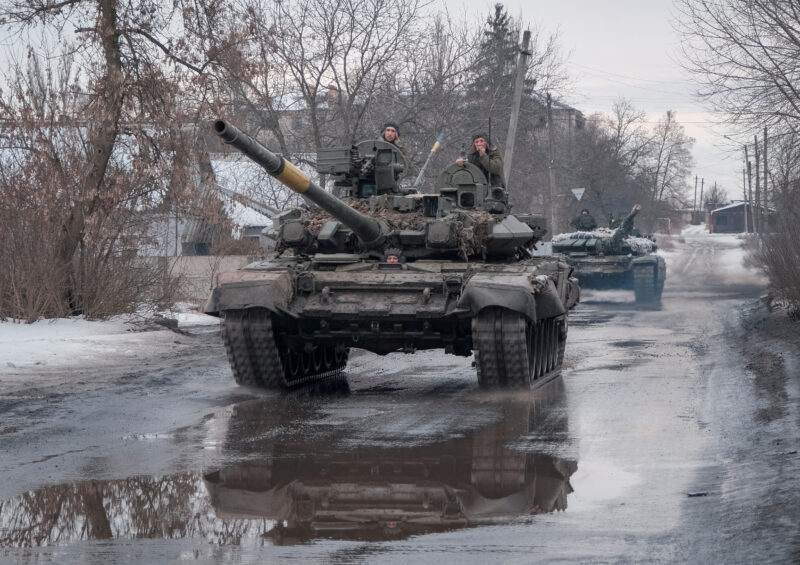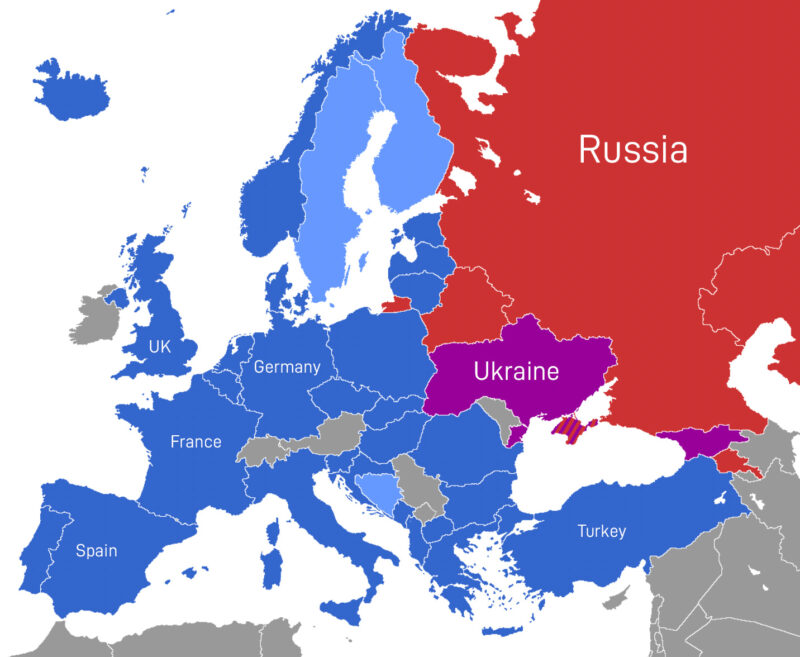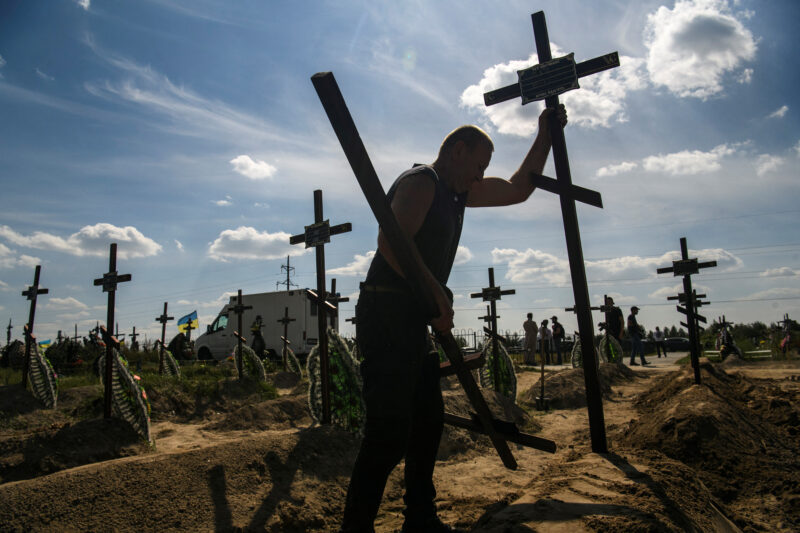Friday, February 24, marks the one year anniversary since the Russian invasion of its western neighbor Ukraine. After an initial invasion and missile strikes, the war has ground to a halt though fighting continues. Russians occupy only eastern portions of the country, as the United States and Europe has rallied to Ukraine’s defense.

WHY DID RUSSIA INVADE?
Ukraine used to be part of Russia for most of its history. But for the past several centuries, Ukraine has had its own sense of national identity, language and culture. It declared independence in 1991 after the collapse of the Soviet Union.
-
Also since the collapse of the Soviet Union – which was the collection of Communist-run countries with Russia at its center for most of the 20th century – experts say Russia has been looking to re-establish political and economic dominance of its neighbors.
-
Russia “annexed” the Ukrainian region Crimea in 2014, taking it over from Ukraine, and prompting harsh sanctions from Europe and the United States.
-
Since the annexation of Crimea, Russia has been supporting Russian fighters in the eastern part of the country who want to break away from Ukraine.
-
On February 24, 2022, Russian President Vladimir Putin ordered what he called a “special military operation” — a full scale invasion of Ukraine.
-
Putin’s likely aim was to get rid of the democratically-elected current government headed by Ukrainian President Volodymyr Zelensky in favor of a new regime more supportive of Russia.
-
Many opponents of the war, including the U.S., have called the invasion “unprovoked” and a violation of international law.
-
To much surprise, the Ukrainians put up a tough defense and were able to keep the Russians from taking the country’s major cities, including the capital of Kyiv.

WHY IT MATTERS:
The Russian invasion of Ukraine has been condemned by the United States, Europe, and their allies. They fear that a more aggressive Russia willing to use military force to get what it wants and could lead to wider conflict pitting nuclear powers against each other.
-
The American-led alliance set up after World War II, the North Atlantic Treaty Organization (NATO) has several members which border Russia.
-
According to the NATO charter, an attack on one is an attack on all, which could lead to a direct war between the U.S. (and NATO members the U.K., France, Germany and Canada) with Russia.
-
Ukraine wants to be a full member of NATO too, though experts think that’s unlikely to happen.
-
Russia’s President Vladimir Putin has threatened to use nuclear weapons against Ukraine. It’s unclear how the U.S. would respond if Russia used even a small nuclear bomb (a so-called “tactical nuclear weapon”), or if they would retaliate with their own nuclear strike.

WHAT’S HAPPENED SO FAR?
Russia’s invasion of Ukraine has led to massive human devastation.
-
The U.S. has estimated that both sides have experienced 100,000+ military casualties—deaths or injuries—on the battlefield. There’s no accurate count yet.
-
The U.N. counts over 7,000 civilian deaths in the conflict.
-
The U.S. and U.N. both accuse Russia of committing brutal war crimes in its invasion, including the intentional targeting of civilians, and the rape and torture of women and children.
-
The war has created some 8 million refugees – people fleeing Ukraine in the face of the war.
WHAT’S NEXT?
There have been some suggestions that Russia may end its wider invasion of Ukraine ceding some eastern territory, though that seems unlikely. Both Ukraine and Russia have vowed to fight on.
